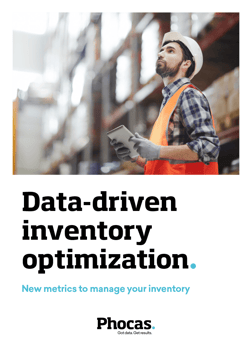4 tips to get the most value from your ERP system

While ERP systems support a wide variety of administrative and operational processes, many aren’t designed for the untrained user. Instead, enterprise systems are often managed by the IT department. Additionally, the reporting capabilities of ERPs is limited. An ERP can’t perform the deep-dive analysis that leads to actionable intelligence. A complementary business intelligence (BI) solution that converts raw data into easy-to-understand information ensures everyone in the business can harness the value in the ERP system.
Identify the root cause of your current business issues
People and processes are usually responsible for flaws in an ERP system. If a process isn’t clear, it makes the system more difficult to use. With an integrated data analytics solution in place, all of your information is stored in one place and can be easily accessed from a dashboard in real-time. This removes errors from the process, so you can quickly identify the root causes of issues and improve operational efficiency.
Before you choose a vendor, meet with department managers to determine what issues they may be experiencing. This way, you can get a clear picture of company-wide needs. Understanding the issues your business is facing can guide your decision-making. Once you have a solution in place, using key performance indicators (KPIs) that address your specific needs will enable your managers to measure and evaluate performance within their department, and near-instant reporting can reveal insights that may have been otherwise overlooked by an ERP system.
Choose a BI tool that is compatible with your ERP and can address specific needs
To ensure you will get the most value from your solution, consider the following factors: First, select a vendor that offers a solution that is compatible with your ERP system. Next, determine if the BI solution can collect your data from your ERP system, as well as your other data sources, and consolidate it into a single silo. Finally, ask the vendor whether the solution comes with any pre-built content created with your industry in mind.
Pre-built content will help product-centric businesses measure key metrics and address issues such as maintaining accurate stock levels and product margin variance. Pre-built queries also empower new, nontechnical users to successfully use the solution. Ease-of-use encourages user adoption and a data-driven company culture. For example, Phocas is compatible with more than 30 ERP systems. Out-of-the-box integrations for popular ERPs make it easy to get up and running quickly.
Obtain a single source of truth of information
Before BI solutions became mainstream, decision-makers had to rely on reports generated by the IT department. Oftentimes, these reports were created from multiple sources with conflicting data. Combining data from all of your various sources, external and internal, and funneling it into a single repository eliminates disparate or redundant data, creating one source of the truth. This eliminates the guesswork and enables decision-makers to access the data they need to quickly to make strategic decisions.
Additionally, unified data that is available in real-time provides a clear picture of what is happening within your company. With complete understanding, executives and managers can answer strategic questions such as, “Which customers have the highest cost-to-serve?” and “Which are most likely to respond to our newest marketing campaign?”
Pull your own reports and create your own dashboards
A centralized data source provides one point of access for all employees. With self-service capability, users are no longer dependent IT for gathering data and generating reports. Instead, even non-technical users can create a report in just a few clicks. Users can view data by a variety of dimensions and attributes, including periods for analyses such as year-over-year comparisons. Access to on-the-spot reporting allows users to quickly spot trends and uncover new opportunities.
A customizable dashboard allows users to personalize their dashboard to their specific job role. Dashboards can also be shared with other users within your company for collaboration. Alerts can be created to let users know when certain issues arise, such as when inventory falls below a certain amount. With all of your data in one place, near-instant reporting and personalized dashboards, a BI solution is an effective tool to gain more value from your ERP system and help your company create a data-driven culture for greater success.
To learn more about how wholesale distributors are are getting the most from ERPs download this ebook: The future of wholesale distribution or click the image below.

Empowering businesses with intuitive data analytics, driving informed decisions for growth and profitability. We make people feel good about data.

Behler-Young connects Amazon Alexa and Phocas BI with great results
Can you have a conversation with your business intelligence solution while driving? Behler-Young sales people do. Robert Wright, a Senior Application Developer and Analyst at Behler-Young, integrated Amazon Alexa with Phocas, a business intelligence solution for manufacturers, distributors and retailers. With critical data only a question away, they always know what's going on even when they're on the road.
Read more
Phocas Software is one of first 100 members of the Tech Council of Australia
The Tech Council of Australia is a brand-new peak body that represents Australia’s tech companies – big and small.
Read more
5 ways to achieve financial process automation
Many finance teams are at various stages along the automation journey, and others are yet to fulfil all their aspirations for their data.
Read more
Delivery in full on time: Why it matters and how you can improve
Delivery in full, on time (DIFOT) is a fundamental measure when analyzing the performance of your supply chain. The main goal is to get your customers the products they need, when they need them, in the quantity they ordered. DIFOT measures how successful your business is at achieving this objective and identifies fulfilment problems and supplier reliability.
Read more
Find out how our platform gives you the visibility you need to get more done.
Get your demo today